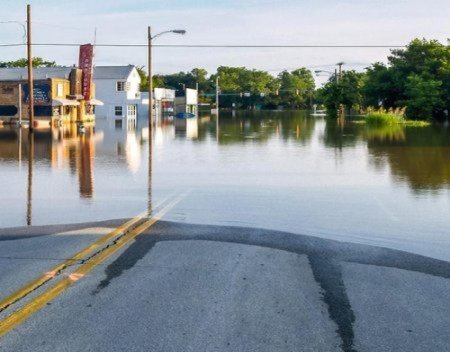
How to Find the Best Flood Insurance Policy for You
Preparing for flood insurance involves several important steps to ensure adequate coverage and protection against potential flood damage.
Here's a general guide on how to prepare for flood insurance: Evaluate your flood risk: Determine if you live in a flood-prone area.
You can check flood maps provided by FEMA (Federal Emergency Management Agency) to assess your property's flood risk.
Understand flood insurance policies: Familiarize yourself with the types of flood insurance policies available.
In the United States, the National Flood Insurance Program (NFIP) offers flood insurance to homeowners, renters, and businesses.
Private insurance companies may also offer flood insurance, so it's essential to understand the coverage options and limitations of each policy.
Assess your coverage needs: Calculate the value of your property and belongings to determine the amount of coverage you need.
Consider factors such as the cost of rebuilding your home, replacing personal belongings, and additional living expenses if you're displaced due to flooding.
Purchase flood insurance: Once you've assessed your flood risk and coverage needs, purchase a flood insurance policy.
If you're in a high-risk flood zone and have a mortgage from a federally regulated or insured lender, you may be required to have flood insurance.
Review policy details: Carefully review the terms and conditions of your flood insurance policy, including coverage limits, deductibles, and exclusions.
Make sure you understand what is covered and what isn't.
Keep important documents safe: Store copies of your flood insurance policy, along with other important documents like property deeds, in a waterproof and fireproof container.
Consider storing digital copies in a secure location as well.
Maintain your policy: Keep your flood insurance policy up to date by renewing it annually and notifying your insurance provider of any changes to your property or coverage needs.
Prepare your property: Take steps to minimize flood damage to your property, such as installing flood barriers, elevating utilities, and securing valuables.
Implementing flood-resistant landscaping techniques can also help reduce flood risk.
Know what to do in case of a flood: Familiarize yourself with emergency procedures and evacuation routes in your area.
Have a flood emergency kit prepared with essential supplies like water, food, medications, and first aid supplies.
Document your belongings: Create an inventory of your belongings, including photos or videos, to expedite the claims process in case of flood damage.
Keep this inventory in a safe place along with your other important documents.
By following these steps, you can better prepare for flood insurance and mitigate the financial risks associated with flood damage to your property.
I have no problem giving you an A1 reference for taking care of the flood policies for me and Diane. I appreciate you working with the mortgage company: the surveyor and our previous agent. The result was a 75% reduction in our flood insurance premiums!
I have known Tim for many years and he is a man with great integrity, work ethic and one of the nicest persons I know. Over the years Tim has provided insurance counseling and advice to our company, for myself personally, as well as to our clients. Recently Tim, took time to analyze our flood insurance policy and he was able to make some excellent recommendations. Our flood insurance costs are now less and we have much better coverage. I recommend Tim to anyone without hesitation or reservation.
We contacted Mr. Holt for an estimate via email over the weekend prior to a closing on a property, hoping for a response on the following Monday to take with us with confidence in being insured at the settlement table on a Tuesday. He exceeded our expectations not once but in readily responding to the initial request and then to follow-up questions all during the weekend frenzy that occurs before closing. "Impressive and responsive customer service," for sure!